How to Upload Jpg Images to Cricut Craft Roon
Did you know that you can upload your own images into Cricut Design Infinite? Information technology'due south true! One of the most powerful features of Cricut Design Space is its ability to accept your uploaded images and convert them into cuttable shapes.
Whether y'all want to utilize your own designs, drawings, family unit photographs, learning how to upload your ain images to Design Infinite lets yous make crafts that are uniquely yours.
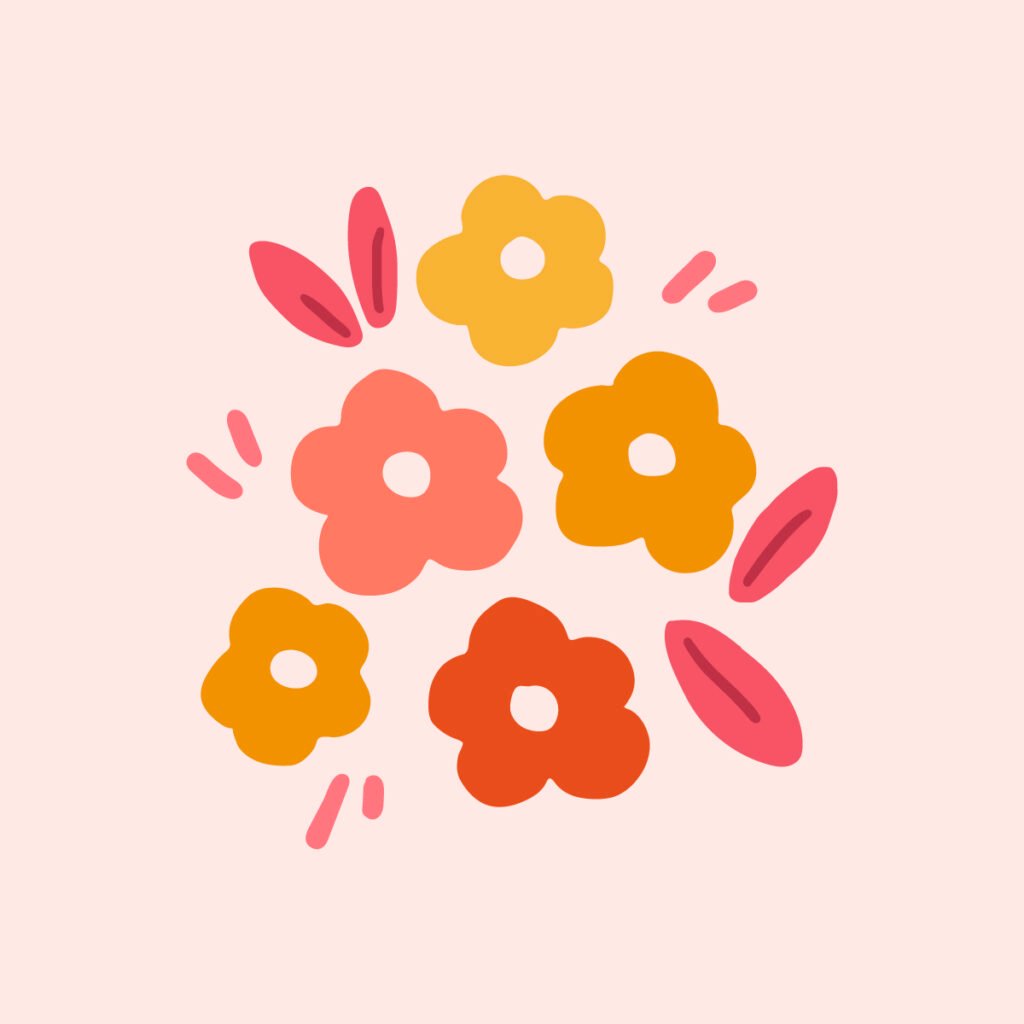
Cricut beginners often ask me: "Can I upload my ain images with Cricut?" And I always answer them with an enthusiastic, "Yes!" One of the greatest things nearly Cricut and Pattern Infinite is that you upload any paradigm you want – for free!
Ready to learn more than about how to upload images to Cricut Design Space? If then, so this blog post is just for you. We'll talk a petty scrap about the types of files you can utilise, where to find the all-time SVGSs, and how to upload them to Design Infinite. We'll even talk about some common issues you may run into when uploading files.
How to Upload Images to Cricut Pattern Space
In this step-by-step tutorial, I'll show you lot but how easy it is to upload your own images into Blueprint Space. All it takes is 4 simple steps (or only 3 steps if you're using SVGs!)
- Open the Cricut Design Space app and outset a new project.
- Click the Upload button, and select the image file y'all want to upload.
- Select the image blazon and remove the background with the various eraser tools. (For raster images simply.)
- Name the image, add tags, and click Upload to consummate.
You tin can use these steps when uploading pictures from the Cricut Design Space app on your desktop, laptop, or mobile device (like an iPhone or iPad).
Brand new to Cricut? Start with this helpful guide.
Now, allow'southward walk through the process in more item.
The Two Main Types of Images
There are two master categories of image files that y'all tin upload to Cricut Design Infinite: raster images and vector images.
Information technology'southward important that you understand the basic differences between the ii file types, but I hope we won't get too technical or complicated.
Raster Images
Raster images are basic images made up of tiny dots of color, called pixels. Digital photos, drawings, and scanned artwork are all types of raster images. A lot of complimentary prune art images are besides raster images.
Raster images end in file extensions like .png, .jpg, .jpeg, .gif, and .bmp. These types of images are created in programs like Photoshop, Procreate, or Pigment.
Raster images will be uploaded to Design Space as a single layer. You can save them as a Print And then Cut image or a solid cuttable shape to use in other types of Cricut projects.
Vector Images
Vector images are graphic images designed with lines and points. When people talk about SVGs, they're talking about vector images.
Vector epitome files end in file extensions like .svg. .eps, or .dxf. These types of images are created in programs like Adobe Illustrator or Inkscape.
SVG images are the most common type of cut file to utilise with Cricut Design Space. SVG stands for "scalable vector graphic". That means you can make the SVG image every bit big or small as you want, without it looking pixelated or blurry.
Why I prefer vector images for Cricut projects
Vector file type images are special because they are much more than versatile, flexible, and easy to utilize with Cricut Pattern Space. Considering they are designed with paths and points, vector images can create a much cleaner cut than jpg or png images.
What's more, SVG files can contain circuitous designs made from multiple shapes. Cricut Pattern Space will read and process these shapes for you, separately the image into different layers equally necessary.
Where to find new SVGs to upload
You lot tin notice costless clip art images on websites like rawpixel.com, or premium SVG files on websites similar Etsy.
If you lot buy SVG images from Etsy or other design sites, you lot will demand to upload them to Design Infinite before using them in your Cricut projects.
- Start, download the cutting file.
- If information technology comes in a aught file, y'all will need to unzip it.
- Then, you can upload the unzipped file to Pattern Infinite.
Note: Not all clip art y'all discover online is free for the taking. Read and respect the intellectual property rights of other designers and only upload images y'all ain and are authorized to apply.
How to upload an image to Design Infinite
Step 1. Open the Cricut Design Space software and start a new project. Select the Upload push button at the bottom of the left blueprint panel. Select Upload Image to upload an image to use in a design. You tin choose an image with 1 of these uniform files types: .jpg, .gif, .png, .bmp, .svg, or .dxf.
(Note: You lot are non currently able to use .dxf files in the iOS or Android versions of Pattern Space.)
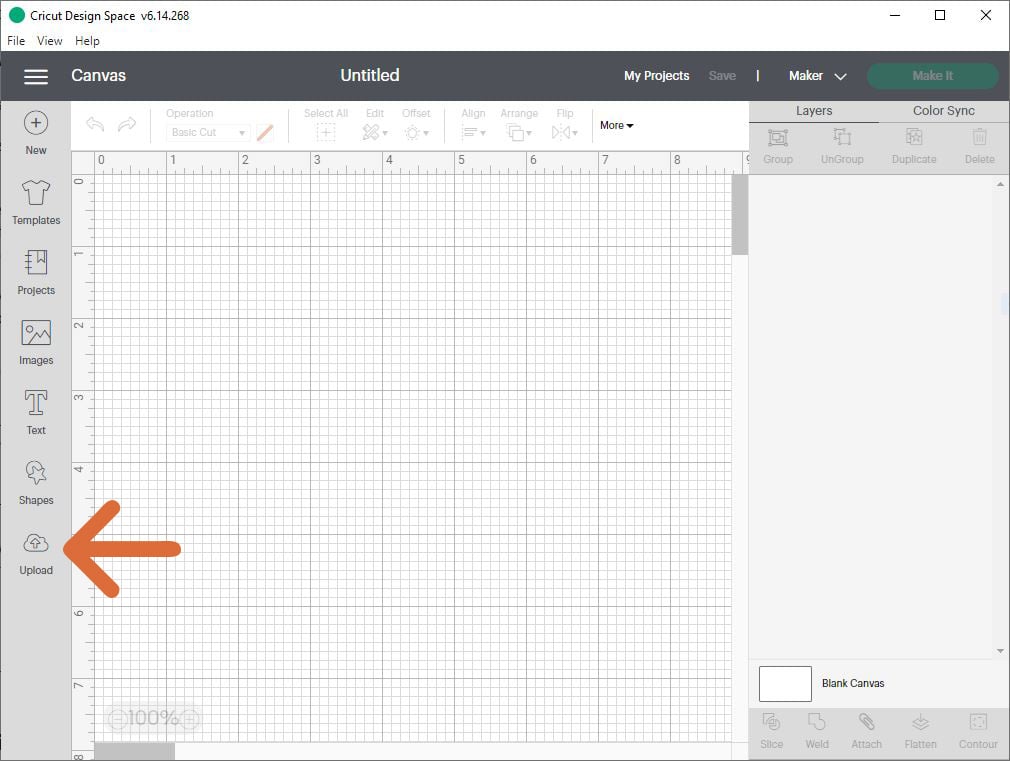
Step 2. Select the Browse button to locate the image yous want to utilize from your computer. Or, if you have the image files ready, you can drag and drib the file into the upload window.
If you upload a raster paradigm (a basic image that ends in .jpg, .gif, .png, or .bmp), yous will see the Bones Prototype Upload screen next.
If you lot upload a vector image (a scalable prototype that ends in .svg or .dxf), yous volition see the Vector Image Upload screen next.

Option 1: Uploading Bones Images (Raster Images)
One time you have selected the prototype, yous will meet the Basic Epitome Upload Screen. You will see a preview of your uploaded epitome on the left.
Stride 3: Clean upward the image.
Pattern Infinite will prompt you to select your image type on the correct. Select the image choice that best matches the complication of your epitome. If your pattern is uncomplicated with clean edges and smooth lines, choose Simple. If your design is more complicated with multiple colors, textures, or patterns, choose Circuitous. (When in doubt, I tend to choose Complex.)
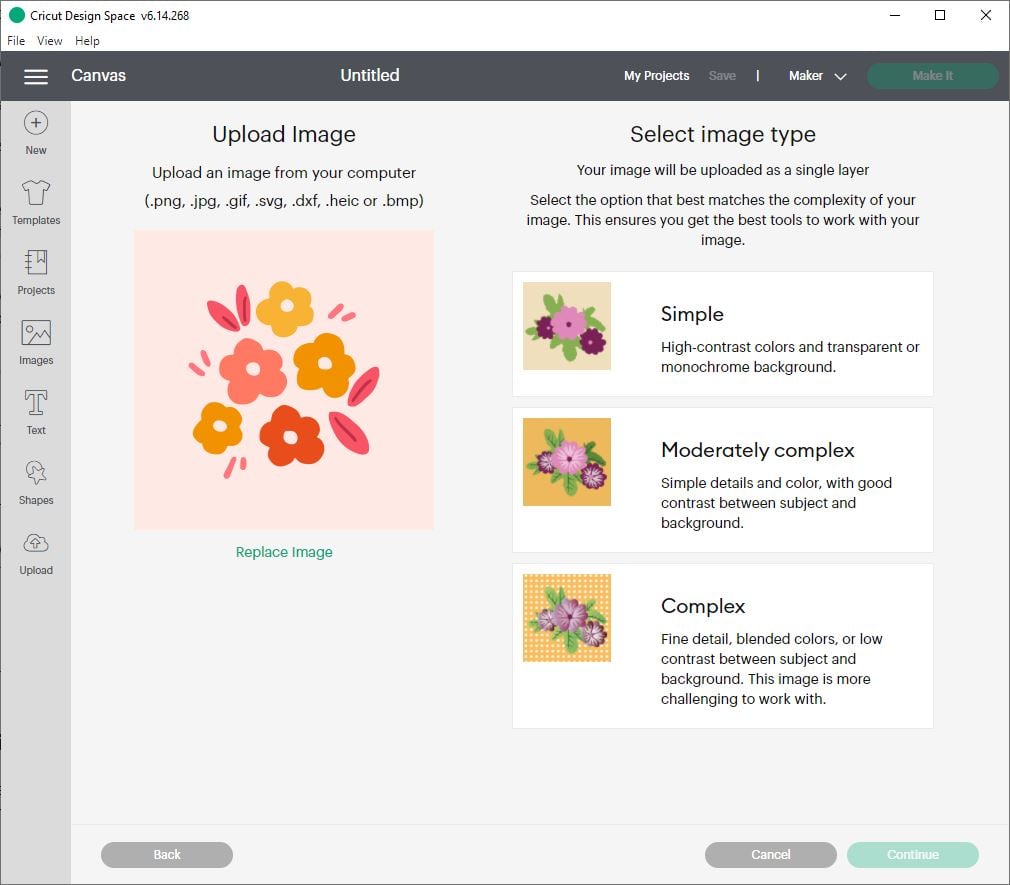
Groundwork Remover Tools
On the next screen, Design Infinite volition give you several options to remove any unwanted background colors or other areas from your paradigm.
If you are a Cricut Access member, y'all tin can use the Background Remover tool to remove the background automatically.
If y'all are not a Cricut Access member, you tin can nevertheless use the Manual tool options: Select, Erase, and Crop.
Cull either the Select and Erase, Erase, and/or Crop tools to remove parts of the image that y'all don't want to use.
- Select and Erase: Select an surface area or colour range in your image, then erase it. Use the Advanced Options button to change the tolerance (or sensitivity) of the tool.
- Erase: Click and hold to erase sections of your image. Yous can change the size of your erase tool by moving the slider.
- Ingather: Utilize the ingather tool to erase rectangular sections of your image.
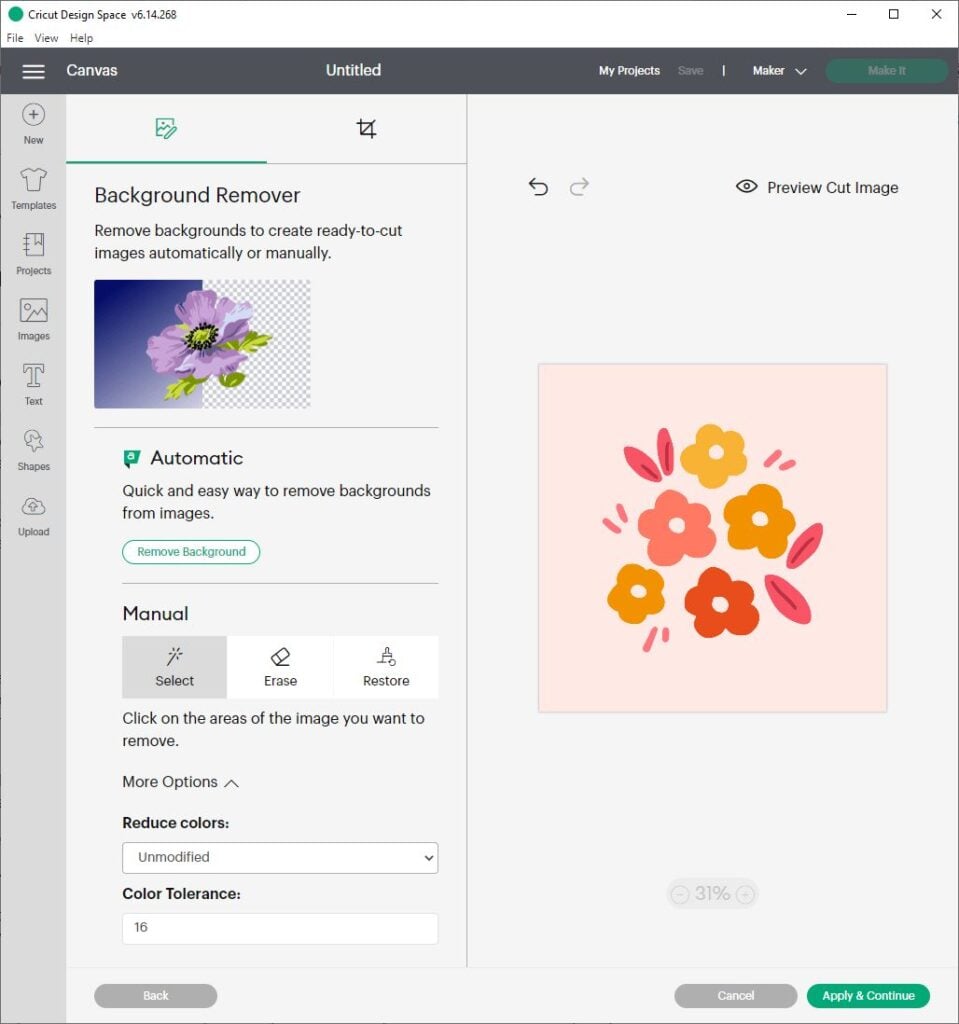
In this case, I want Design Space to continue the flower and leaf shapes, simply non the background. So, I used the Select and Erase tool to click on the calorie-free pink groundwork expanse to remove it from the prototype.
You tin can use the buttons in the pinnacle-right corner to zoom in or out as needed to see all parts of your image. (I fabricated certain to zoom in and erase the light pinkish groundwork colour in each of the blossom centers.)
Step four: Name and Save the Image
Select Preview to see what the terminal Cut Image volition look like. The solid gray surface area represents the contours of the epitome that yous will see on your Design Space canvass. The gray checkerboard background indicates areas on the epitome that have been removed – these areas are at present transparent and volition not be cut. If you see whatsoever areas you have missed, click Hibernate Preview to return to the Select and Erase Screen. When you lot are happy with the image, select Continue.
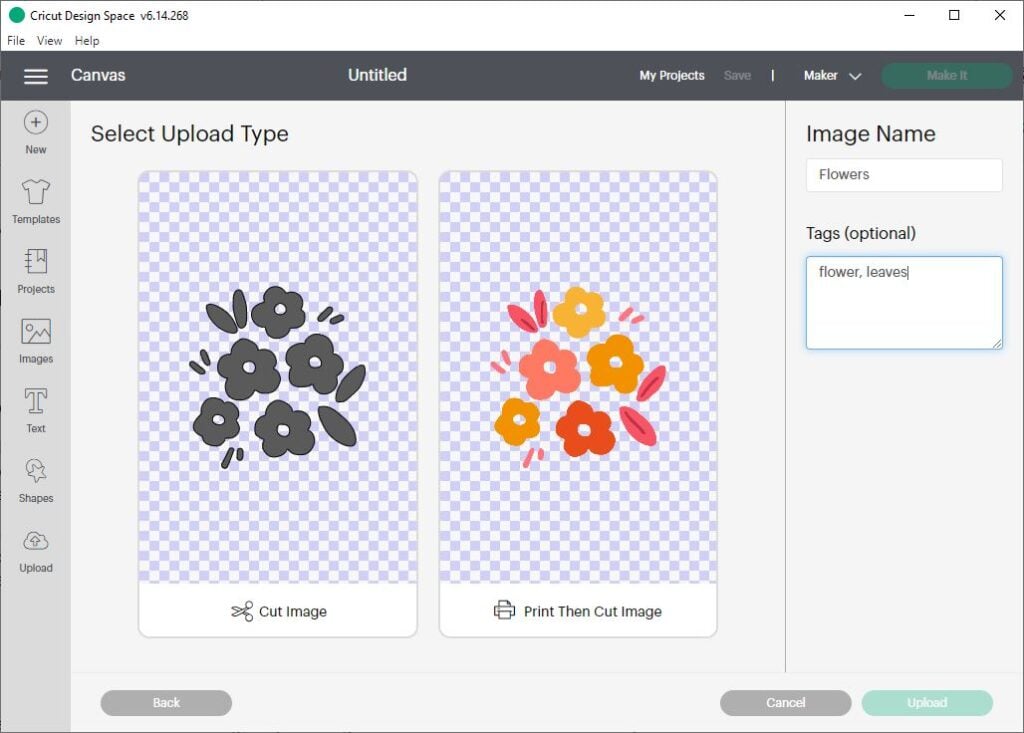
On the side by side screen, choose whether to salve your epitome as a Cut Epitome or a Impress And then Cutting Image. If you cull Cut Prototype, the prototype will be saved as a solid shape only – all colors and patterns will be removed. If you choose Impress Then Cut Epitome, the image will save with the colors and patterns intact. (Choose this option for Print Then Cut projects, like stickers or printable vinyl projects.)
Finally, proper noun your image and give it a few tags (keywords) so that you can search for it subsequently. Select Upload. Yous will now come across your image in the Contempo Uploads prototype library at the lesser of the screen.
To add together the paradigm to your pattern, click on the paradigm to select it. Then click Insert Images to add it to your Canvas pattern screen.

In this example, since I saved the flower paradigm as a Cutting image, the prototype is added to the Canvas screen as a single layer. I tin now cut this shape out of newspaper, vinyl, or whatsoever other material I want.
Pick ii: Uploading Vector Images
Skillful news – uploading vector images to Cricut Design Space is even easier than uploading raster images.
Select the vector paradigm (ends in .svg or .dxf) that yous want to upload. Y'all can select it in your file folder, or drag and driblet the folder to the Design Space epitome upload window.
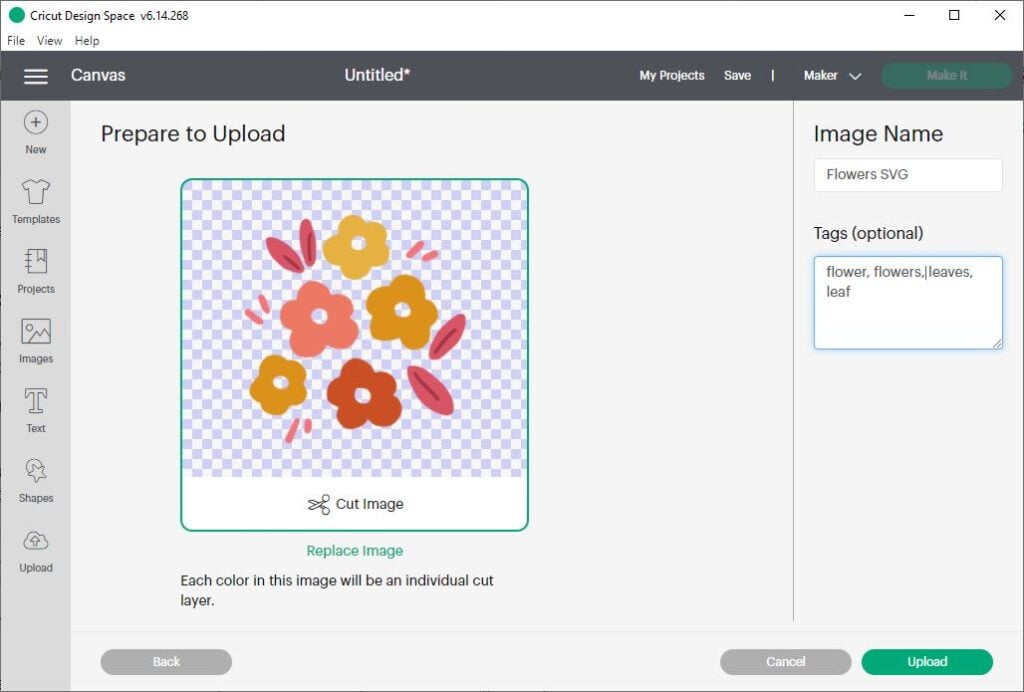
Step three: Proper name and Save the Image
On the next screen, you will see a preview of your selected file. Requite your file a name and a few descriptive tags (keywords), and then you tin observe it afterwards. Then select Upload.
You lot will return to the Upload screen, where you will see the epitome in the Recent Uploads image library at the lesser of the screen. To add the image to your project, click on the epitome to select it, and then select Insert Image to add it to your Canvas.

Note: If the vector prototype you've chosen was designed with multiple layers, the layers will be grouped together on the Sheet. Y'all will exist able to see the individual layers in the Layers Panel on the right-mitt side of the Canvas screen. If you want to move or resize the layers individually, you must first ungroup them.
Where to find images you've already uploaded
Hither'southward how to detect all the images that you've uploaded to Design Space.
First, click on the Images button to see the Cricut images Library. From here, you lot can search for an image by its name or tag. You lot can likewise select Uploaded from the Ownership filter on the left-hand carte drop-down to see only those images that you've uploaded yourself.
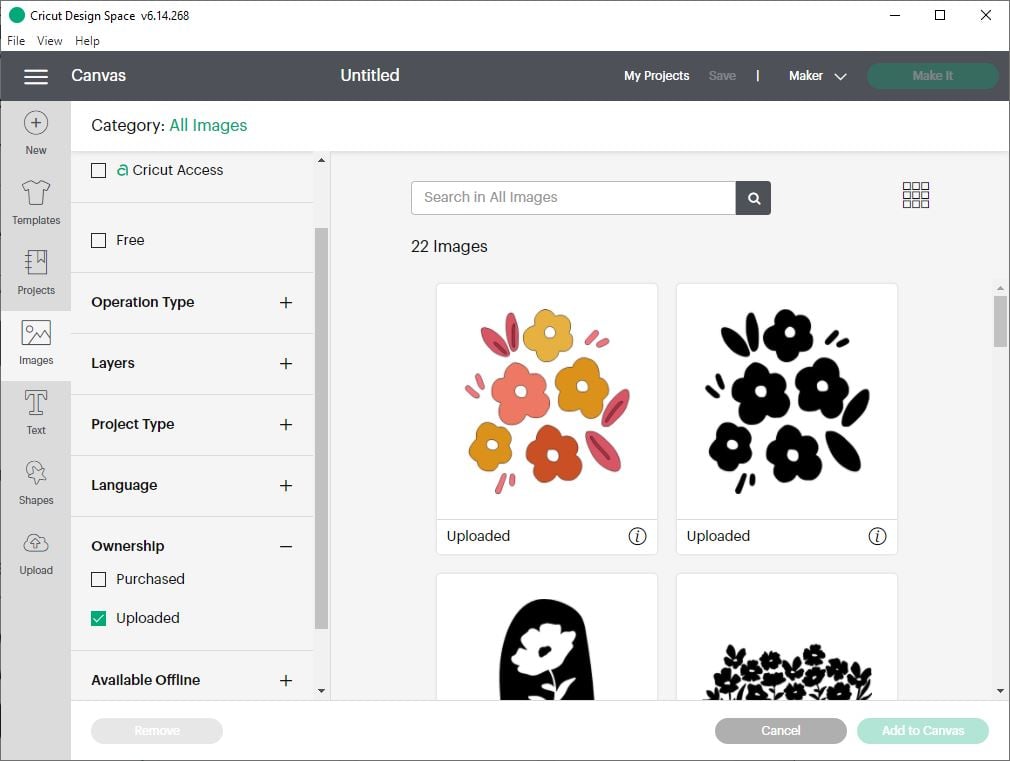
Troubleshooting Image Uploads
Here are a few oft asked questions nearly uploading images to Cricut Pattern Space.
Why is my paradigm solid greyness?
Raster (pixel-based) images like .jpg and .png will upload every bit a single shape layer. If you choose to save the prototype every bit a Cut Image, Cricut Design Infinite volition convert it to a solid, cuttable shape.
If you want to continue all of the interior details – such as multiple colors, patterns, etc. – make sure to save the epitome as a Impress Then Cut image. You can so utilize the prototype in Impress Then Cut projects, like stickers or printable vinyl projects.
How practise I upload images on the iPhone app (iOS app)?
Uploading images to the Cricut Blueprint app on your phone is very similar to the steps I've outlined above. The only difference, actually, will be the layout of the screen.
- Open the app and create a new Sheet.
- Click the Upload button in the bottom bill of fare bar.
- Take a photograph, select a photo from your Photograph Libary, or select a photo from your Files.
- Employ the Remove, Erase, and Crop tools to clean upwards your paradigm. Apply the preview image in the top right corner to meet what your cut file will look like.
- Refine the cutting paths using the Despeckle and Smooth tools.
- Select the Upload type – either a Cut image or Impress Then Cut image. Then, proper noun your epitome and press Save.
Help, I can't remove the background.
Information technology can exist difficult to utilize the Select and Erase tool to isolate the main subject area of a photograph if the groundwork is too complex, or if in that location is low contrast between the subject and the groundwork. In this instance, your best bet is to use the Eraser tool to manually erase the parts of the image that you don't want to cut.
My cutting image looks blurry or pixelated.
When choosing a raster image (.jpg or .png) to utilize every bit a cutting file, look for a simple image with clean lines and solid colors. This volition help your Cricut create the cleanest cut file possible. (Remember that if you enlarge a low-resolution .jpg epitome, it's going to look blurry or pixelated.)
More than Cricut Design Space Tutorials
If you love Cricut and want to learn more about Design Space, here are some posts y'all may exist interested in.
- How to Connect Cursive Letters in Cricut Design Space
- When to Use Weld vs. Attach in Cricut Design Space
- How to Make a Monogram in Cricut Blueprint Space
Have questions? Bring together the Facebook Group!
I hope this article was useful for yous! If you take any additional questions, feel free to join my Facebook Grouping. I created this group for you to share pictures, inquire questions, and help each other out.
What'south Side by side?
Pivot this postal service: Salvage this tutorial to your Pinterest boards so that yous can come dorsum to information technology later.
Leave a annotate: I love to hear your feedback. Tell me in the comments below!
Share on Instagram or Facebook: When you make this project, share it on social media and tag me @sarahmaker. I love to see what you brand!
Materials
- JPG or SVG image file
Tools
- Cricut Design Infinite
Instructions
Raster Images
- Open the Cricut Design Space software and start a new project. Select Upload.
- Select the Browse button to locate the image you want to apply from your computer. Or, if you have the epitome files ready, you can drag and drop the file into the upload window.
- Select the image type that best matches the complexity of your image. Then, use the Select and Erase, Erase, and Crop tools to remove parts of the image that you don't want to use.
- On the side by side screen, cull whether to save your image as a Cutting paradigm or a Print Then Cut prototype. Proper name your paradigm, give information technology a few tags, and click Upload.
Vector Images
- Open up the Cricut Blueprint Infinite software and outset a new project. Select Upload.
- Select the Scan push button to locate the image you want to utilise from your figurer. Or, if yous have the paradigm files gear up, y'all can drag and drop the file into the upload window.
- Name the epitome and add a few descriptive tags (keywords), so y'all can find it afterwards. Then select Upload.

Sarah Stearns has helped thousands of makers find their next craft project with gratis patterns and stride-by-pace tutorials on her blog, sarahmaker.com. Read more than.
Her work has been featured in Scientific American, Adept Housekeeping, Vox, Apartment Therapy, and more.
Source: https://sarahmaker.com/upload-images-cricut/